Over the past 10 months, with the pandemic outbreak, education systems have shifted to virtual and quasi virtual learning. The usage of remote learning intervention, tools, programs and strategies have increased drastically across subjects for all grade levels.
Over the next few months we will be rounding up our top used supports in 2020.
First up we have our most popular remote learning programs, interventions, and strategies that have been used during the 2020 year.
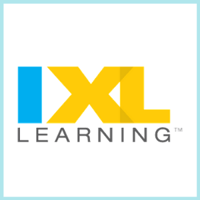 1) IXL
1) IXL
IXL is the most commonly used remote support by our Branching Minds district partners. IXL is a K-12 learning platform that provides comprehensive, standards-aligned content for Math, Language Arts, Science, and Social Studies. The program is used online and includes guided instruction for students, independent learning through practice questions and feedback, and analytics and data on student progress. It is a great option for students learning remotely, but internet access is required. Although this is a paid support, free trials are available for classroom teachers.
There is also some preliminary research supporting the effectiveness of the IXL platform. A series of non-experimental studies across multiple states showed that schools using the IXL program had higher gains in Math and ELA test scores, compared to schools who were not using the program.
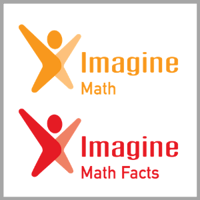 2) Imagine Math & Imagine Math Facts
2) Imagine Math & Imagine Math Facts
Another commonly used online program is Imagine Math, along with its early elementary version Imagine Math Facts. These online programs cover all grade levels and are personalized for students based on their math skills and learning needs. The platform provides students with tools, applications, and tasks to develop math problem-solving skills. For younger students, the focus is on automaticity and fluency of math concepts. Students can work through the problems independently in remote settings, although internet access accessibility is a requirement.
Both programs have research supporting their evidence of effectiveness. Quasi-experimental studies showed that students who received these programs showed significant growth using a nationally normed Math assessment.
|
Related resource: 6 Research-Based Programs to Support Social Studies, Science and Arts for Learning at Home |
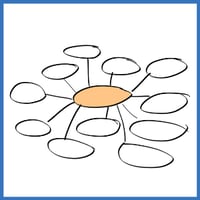
3) Graphic Organizers
This intervention strategy is perfect for remote and independent learning, especially for students who do not have reliable internet access. They can be used across all topic areas and grade levels to scaffold students’ understanding of how ideas and concepts fit together. They can be used to sequence story events, brainstorm essay ideas, organize story elements (such as chronology, characters, and setting), create a timeline, make plot outlines, dissect conflict, find the main idea and supporting details, learn about character traits, compare and contrast, and much more. Students can also use graphic organizers to break down complex math problems and process how to solve them. Importantly, this tool also helps teachers get feedback on their students’ through processes and can be used to identify where students need additional support.
Graphic organizers are also an evidence-based strategy. Studies have shown that graphic organizers can improve reading comprehension skills among students with learning disabilities and when they are used during math lessons, students’ math skills and performance levels improve.
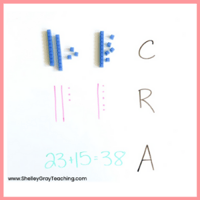 4) Concrete-Representational-Abstract (CRA)
4) Concrete-Representational-Abstract (CRA)
CRA is a commonly used Math strategy that can also be implemented across all grade levels when students are learning remotely. When using the CRA method, students are guided to approach math problems from three levels (concrete, representational, and abstract) in order to deepen their understanding of math concepts. Students are first provided with concrete examples of a math concept using physical, hands-on material. Next, they are introduced to a representational example of the same concept using pictures or drawings. Last, the abstract form of the math concept is introduced using the appropriate math symbols. Once examples are provided, students can go through these steps independently, using manipulatives and items they have in the home, specifically for the concrete phase.
This is another evidence-based strategy which has been shown to improve students’ Math achievement, especially among those with learning disabilities.
|
Related resource: 5 Evidence-Based SEL Supports for Learning at Home |
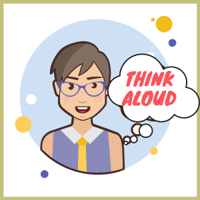 5) Think-Alouds
5) Think-Alouds
This reading comprehension activity is ideal for elementary students engaged in synchronous and asynchronous learning. Teachers first use modeling to show how skilled readers construct meaning from text by reading a passage out loud while talking through one's thought process. Once this process is modeled, students can practice independently. Teachers can use pre-selected questions to help scaffold students and guide them towards asking themselves questions as they read in order to better understand the text. This strategy can also be used to engage students when reading nonfiction text for Science and Social Studies.
The think-aloud strategy is a metacognitive one, meaning that it has students think about their own learning and thought processes. Not only does engaging in these types of processes improve self-awareness, but these practices have also been shown to improve students' understanding of reading and other classroom material.
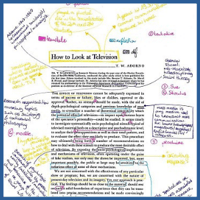 6) Reading Actively Through Text Annotation
6) Reading Actively Through Text Annotation
This is another metacognitive reading strategy which is especially useful for engaging upper elementary and middle school students. It is also something students can do independently in asynchronous or synchronous remote learning environments. The strategy involves having students engage in an ongoing ‘conversation’ with the author or a text by recording a running series of brief comments in the margins of the text or a photocopy version. Notes may include unknown vocabulary words, questions, opinions, or connections to earlier passages. Not only does this engage students in their reading assignments but it also provides foundational note-taking skill and allows students to engage more deeply with the content they are reading. This is also known as active reading, which has been shown to contribute to improvements in students’ reading abilities.
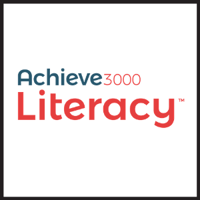 7) Achieve3000 Literacy
7) Achieve3000 Literacy
If your district or school is looking to invest in a strong, evidence-based, online reading program, that covers 3-12, this is worth checking out. The program provides students with differentiated nonfiction text and continuously adapts the content to to adjust to the student's evolving reading level. Students can work through the activities independently and teachers can keep track of how students are moving through the lessons and content.
In a rigorous evaluation study with suburban and urban school districts across the U.S., students randomly assigned to receive the Achieve3000 program showed significant improvements in their reading assessment scores. Given these positive outcomes and the quality of the research, this places Achieve3000 literacy as a “Strong” program, based on the Evidence for ESSA standards.
|
Related resource:Top 5 Evidence-Based Strategies Students Can Use While Learning at Home |
 8) Newsela
8) Newsela
Newsela is an online program that provides differentiated non fiction texts across all grade levels. The program has a free version which allows students to access articles, take online quizzes, and create annotations. Teachers can also assign specific articles to students and receive daily recommended articles through email. Articles and other materials can be printed and sent home for students without access to reliable internet. The website also provides remote teaching toolkits and other resources for distance learning.
Although the Newsela platform hasn’t been studied, evidence suggests that classroom magazines and nonfiction material can help improve students' reading in several areas.
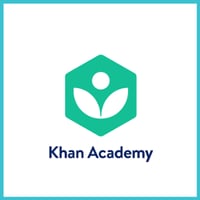 9) Khan Academy
9) Khan Academy
This free online program is a great resource for almost all topic areas and grade levels. Khan Academy offers practice exercises, instructional videos, and a personalized learning dashboard that give learners the opportunity to study at their own pace in and outside of the classroom. The content focuses on foundational skills in the areas of Reading, Math, Science, and Social Studies. Khan Academy can be used by teachers, parents, and students independently to work on specific skills within subject areas. The video tutorials and lessons are brief but provide students with the necessary information to learn and practice basic skills. Preliminary research suggests that students who use Khan Academy to work on their Math skills show growth in their overall Mathematics performance.
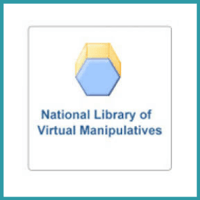 10) National Library of Virtual Manipulatives
10) National Library of Virtual Manipulatives
This free website houses a large library of virtual math manipulatives. These objects help students solve math problems in different ways and make abstract concepts more concrete. Objects include a virtual abacus, pie charts, and Venn diagrams and can be used across grade levels to solve simple and complex problems. The library is searchable by grade and math topic, which can be aligned with lessons covered in the core classroom curriculum. Manipulatives can then be paired with specific lessons and problems so students who are remote can engage with the objects virtually to help them understand math concepts. Although the use of these specific virtual manipulatives has not been researched, studies have shown that using manipulatives in math, compared to abstract symbols, results in higher retention, problem-solving, transfer, and justification skills.
Interested in Learning About Our Library of Curated RTI/MTSS Evidence-Based Interventions?Branching Minds has the most comprehensive and instructive library of evidence-based learning supports of any MTSS platform. Our supports include hundreds of paid evidence-based intervention programs, as well as nearly a thousand free evidence-based strategies, activities, and resources. For each of these supports, BRM helps educators understand what the support is, why and for whom it should be used, how it should be delivered, and connects them to the supporting research and additional material. Our learning science team has curated these resources from the most trusted and respected hubs of evidence-based supports, including the Florida Center for Reading Research, What Works Clearinghouse, Evidence for ESSA, Intervention Central, the IRIS Center from Vanderbilt University, Harmony SEL; and, each one has been reviewed and categorized based on the ESSA tiers of evidence guidelines.
Want to learn more?
|

About the author
Dr. Essie Sutton
Essie Sutton is an Applied Developmental Psychologist and the Director of Learning Science at Branching Minds. Her work brings together the fields of Child Development and Education Psychology to improve learning and development for all students. Dr. Sutton is responsible for studying the impacts of the Branching Minds on students’ academic, behavioral, and social-emotional outcomes. She also leverages MTSS research and best practices to develop and improve the Branching Minds platform.

Your MTSS Transformation Starts Here
Enhance your MTSS process. Book a Branching Minds demo today.
















.png?width=716&height=522&name=Addressing%20Foundational%20Reading%20Skills%20in%20MTSS%20(preview).png)
.png?width=716&height=522&name=Understanding%20Literacy%20Basics%20(Preview).png)
